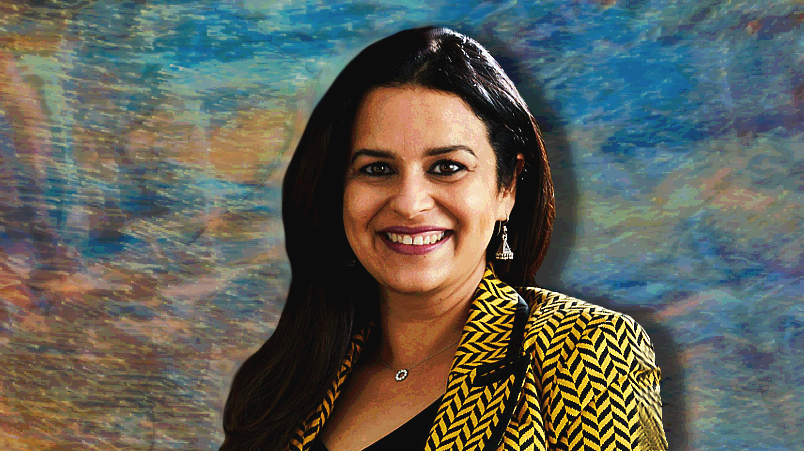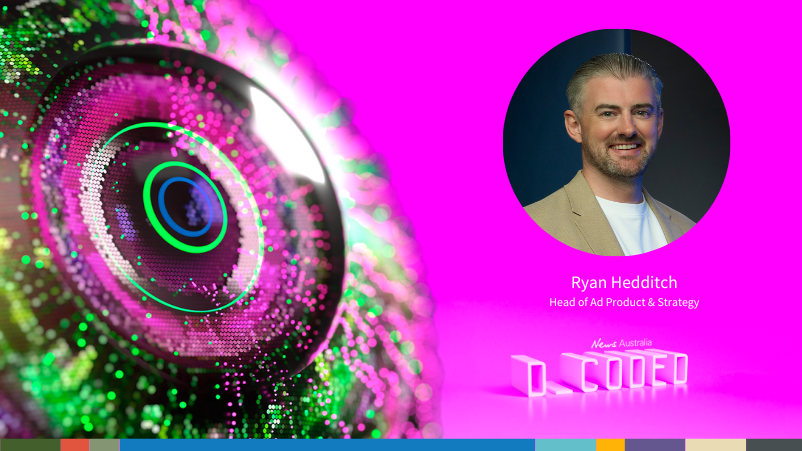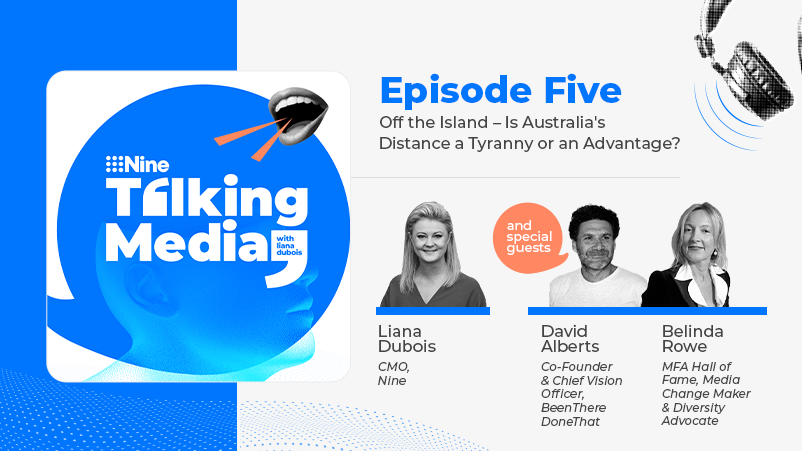ANZ CMO Sweta Mehra on flipping to owned media first for personalisation, conversions triple – and why customer experience ‘creates’ consumer memories, ads ‘trigger’

Sweta Mehra: "The more customers use our products, the more we know about their financial matters and therefore we've got more information to give them the right nudges, the right insights to help them...improve their financial wellbeing."
Retailer media is white hot but across multiple sectors and industries, owned media plays a much bigger and important role for brands and marketing teams – as ANZ's CMO Sweta Mehra discovered after an audit and evaluation of the bank's owned media assets last year. Mehra knew there was some magic the bank wasn't tapping with the 6 million or so people it interacts with each month across its websites, apps, content, call centres, emails and CX journeys and that's now playing out. According to Sonder, owned media is worth $3.9bn, nearly double that of the retail media sector. And in a possibly uncomfortable twist for the ad industry, Sonder's co-founder, Angus Frazer, says work from Duke University's marketing psychology faculty shows stronger consumer memories for a brand or organisation are created through customer experiences – advertising acts as more of a trigger for driving what the Ehrenberg-Bass Institute calls buyer mental availability.
What you need to know:
- ANZ CMO Sweta Mehra says a “mindset shift” has occurred at the bank’s marketing team in how paid and owned media is used.
- For some products, like personal loans, ANZ now looks first to its owned media channels before devising a paid media campaign.
- A multi-year investment in CX, martech and data and analytics has seen ANZ’s personalisation strategy delivery big gains in customer conversions by coupling with a smarter content and owned channel strategy.
- ANZ conducted an audit and evaluation of its media assets last year – Mehra would not disclose the value of ANZ’s media channels but Sonder estimates the average value of media assets for an Australian financial services company at $117m.
- “We’ve seen as much as tripling conversion levels,” says Mehra.
The more customers use our products, the more we get to know about their financial matters. And therefore we've got more information to give them the right nudges, the right insights to help them manage their money better – and therefore improve their financial wellbeing.
ANZ has clocked the differing roles of paid and owned media and flipped how its 400-strong team plan media campaigns. While paid budgets aren’t being cut, the 15-30 second conversations they deliver are being usurped by a drive for much deeper conversations – up to eight minutes, per CMO Sweta Mehra – within the bank’s owned channels.
The strategy, off the back of a multiyear data, analytics and personalisation buildout, is enabling the bank’s marketing unit to refine the owned-paid strategy down to individual product level.
One example is personal loans. Mehra told Mi3 the marketing team would previously have built a paid campaign first – even though approval rates are lower for new customers than existing customers. But now ANZ has the data capability and increased engagement via content to better extract “signals” that customers are in market, it’s upending the previous approach – starting with its own customer base on its own channels before expanding into acquisition via paid media.
“In the past, without having all of this well quantified data, as a marketer in that team I would have started by creating a [paid] media plan: ‘give me this rate, this frequency’,” said Mehra. “Now, we are saying ‘if this is the business objective, what is your owned media strategy – and then how does the paid and earned media come on top of that?”
Now the bank is pushing to fully leverage owned assets first instead of spending more on paid media as a default.
But Mehra underlines that it’s not a case of saving money by cutting paid media investments, instead doing more with the budget she has, and ensuring her teams consider how ANZ’s owned channels can better serve six million customers coming to those channels each month – and unlock what she said is “hundreds of millions” of dollars in value for the bank.
Not selling ads
ANZ recently had its owned assets valued by owned media consultancy Sonder. Mehra won’t divulge the dollar value calculated by that audit – claiming that as ANZ has since launched new owned channels the number is no longer current – but Sonder estimates the average value of media assets owned by a financial services company is $117 million.
Whatever the figure, Mehra said the bank is not about to join the throng of retailers and airlines selling media to third parties. Sonder’s audit highlighted that selling media is “my smallest upside opportunity,” per Mehra.
Nor is ANZ about to start selling ads alongside its publishing venture – ANZ Bluenotes – as the likes of Commbank are starting to do.
“I know some of my peers are getting into magazines, and they're getting into investments. The reality is all of that, for us has been tiny. I don't see ourselves getting into that.”
The lion’s share of value within ANZ’s owned media – and Mehra’s focus – lies in using it to better engage, personalise and cross-sell to its existing customers.
“The upside magic is in engaging our customers, driving longer-term relationships and building on top of the advertising – the paid and earned that we're doing – than in actually monetising externally,” she said.
There is also significant value to be wrung from existing partnerships – such as with Cashrewards, which the bank bought two years ago, as well as Cashrewards’ merchant partners.
Understanding the value of its owned media channels also means partnerships with rightsholders – such as the Australian Open – are no longer a one-way conversation, because the bank is exposing that partner to potentially a larger audience than the exposure it is buying into.
Tripling conversions
The strategy is already driving significant efficiencies.
“Just on anz.com over the last couple of years, as you focus a lot more on the internal channels, we've definitely seen much better conversions,” said Mehra.
“That's partly driven by content, partly driven by better online forms and so on, that we've seen as much as tripling conversion levels versus the past … and tripling at the bottom of the funnel is massive.”
Sonder’s Angus Frazer is unsurprised by those results. He thinks owned media is actually better at building memories than paid media, with the latter serving as a reminder rather than a memory-maker.
If you acknowledge that a brand is simply a memory, then the role of owned media can be more clearly defined,” per Frazer. “I've spent time in the US with Duke University's marketing psychology faculty, and one of the things that we learned with is that memories are fundamentally created through experiences.
“Advertising, in the paid media sense, is reductive by nature. You take a great, big, expansive brand story and you reduce it down to a 15-second ad, or a banner or a poster,” he added.
“So advertising and paid media are very good at triggering memories. But creating memories comes through experience – and that's the domain of owned media. Because your customers are there to experience your store, your branch, your lounge, your app, your website – and that gives you a much greater opportunity to create positive experiences.”
Frazer thinks that too many marketers are falling foul of what he calls the “transmedia trap” – and wasting a major opportunity to build brand.
“Transmedia is where a piece of advertising is developed for paid media comms, and then it basically gets dropped into all of your paid, owned and earned channels. That’s done in an effort to create ubiquity and efficiency. But really, what it’s doing is squandering that opportunity for owned media, because you are using it to essentially trigger brand memories rather than creating new brand memories.”
Frazer thinks that is “one of the big watch-outs for marcoms … and also, why having great content is so important within earned media.”
Content-personalisation growth axis
ANZ’s Mehra is onboard with the transmedia trap theory – and said the bank is planning to ramp up both content output and quality. She’s not planning to go full Hollywood just yet but will “absolutely” be increasing AV production.
“If you are engaging the customer four times [a month, or a year] versus when you want to start doing it 40 times, you need to absolutely think about how you're scaling your production without increasing your cost by 40 times,” said Mehra.
“So yes, we will be doing a whole lot more, we are already doing a lot more. And I know in the world of generative AI, everyone's looking at how that helps get more scale and speed, we’re no different.”
Ultimately, she said the aim is to get “more customers using more of our products more often – in the way that they are intended to be used.
“Because we believe that the more customers use our products, the more we get to know about their financial matters. And therefore we've got more information to give them the right nudges, the right insights to help them manage their money better – and therefore improve their financial wellbeing,” per Mehra.
“So yes, there there's a whole revenue angle to all of this. As I said, it's pretty sizeable, pretty attractive. But there is an equally big financial wellbeing context here for us that we're equally committed to,” said Mehra.
“So in one or two years time, we'll hopefully have more engaged customers, better revenue, better financial wellbeing. And hopefully, we'll have even more improved personalisation capabilities to leverage and maximise our [owned] assets.”
This article is based on an Mi3 Market Voice partner podcast from Sonder. You can get the full download on ANZ's owned media strategy via CMO Sweta Mehra here.



